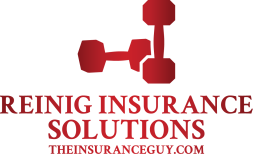Your defense begins with
If there is one thing that I like about establishing a risk management system for health clubs, it is simplicity. Club policies and procedures not only have to be consistent, they have to be simple and easy to implement. Whenever I am speaking at a health club seminar I ask the club owners and managers to come away with only two thoughts on how to control claims; education and documentation. Granted, the terms “education” and “documentation” are relatively vague, but they are the foundation for creating effective risk management for any health club business.
Education is relatively self explanatory. The more you and your staff learn about safety, the less likely you will experience a liability insurance claim. With just a little bit of effort, you can create an environment that promotes a safe workout environment and improves customer service. Here are a few of the basics:
- CPR/First Aid Training: Every club should have at lease one person on the premises at all times who is trained in CPR and First Aid. Many clubs now have an AED (Automated External Defibrillator) on the premises as well. The CPR training includes training for AED implementation. Getting everyone trained is simple. However, we have a lot of turnover in our industry so staying on top of it every few months is the hard part.
- Offer an Orientation: As part of the sales tour, every new potential member should be offered a complete orientation on the use of any and all exercise apparatus available to them at the club. Obviously working with the member on every machine is not practical. The important point is that you should at least “offer” the orientation. Later on when a member hurts themselves on your cable crossover unit, they will be hard pressed to accuse you or your staff for not showing them how to property use the device. This educational process will not be beneficial unless you and your sales staff consistently offer this orientation. Some clubs have monthly “new member orientation” sessions posted on the club bulletin board or noted in their newsletter. This process not only delivers a more educated member, it is a reflection of the club’s commitment to customer service.
- Personal Training Certification: Although it is important that your staff (especially your trainers and group instructors) are “certified”, it is more important that they put their education to use. Trainers are great about teaching their “clients” how to properly exercise and achieve results, but what about the rest of the members in the club? If you or a trainer notices a member doing something improper that can potentially cause injury to themselves or others, it is your duty to intervene and help that individual. The method of delivery is important as well. Letting the client know that they may be able to achieve better results by correcting their form or pointing out that a particular apparatus is not designed to be used “that way” can help reduce member malfunction injuries and may even turn that member into a personal training client. It’s all about service.
Documentation is a combination of maintaining proper records and establishing specific protocols for reporting incidents. One of the most important documents that warrant specific attention is the member “waiver”. A properly written waiver has two major components. The first part gives the member heads up on the potential risk of injury and/or death. The second part states that since the member knows that exercise and the use of the club is potentially hazardous, they agree that they won’t sue you when they get hurt. Of course attorneys expand on the actual member waiver wording, but basically, this is all you need. However, to be enforceable, many jurisdictions want to see the waiver on its own stand-alone form or at least have a separate signature line on a membership contact. Burying your waiver in seven-point type font on the back on a membership agreement will not hold up. Other important documents to have are; Club Policies and Guidelines, Maintenance Logs, Parent/Guardian Waivers, and Tanning Waivers.
Having specific procedures for reporting incidents is critical for establishing a proper defense. The basic rule of thumb is to document EVERYTHING. When someone slips & falls, gets thrown off the back of a treadmill, or twists their ankle in a group class document it. Even if they say that they are “O.K.”, document it anyway and get witness reports if possible. Since most jurisdictions allow that member to sue two years after the date injury, it is vitally important to gather as much data as possible on the date the injury occurs.

